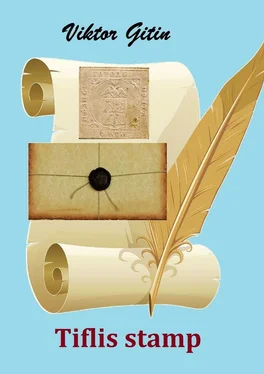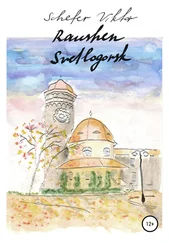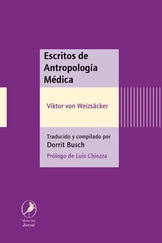Tiflis stamp
Viktor Gitin
© Viktor Gitin, 2021
ISBN 978-5-0055-9055-8
Created with Ridero smart publishing system
Tiflis stamp is an amazing journey of the extraordinary mark through the time, the country and people’s lives
The people’s fates are sometimes formed very surprisingly and even fantastically. The history of countries and peoples develops even in a more complicated and contradictory manner. And in this circulation of events, the small objects around us, sometimes become the most vivid reflection of the changes occurring in the world and in time.
Modest miniature – a postage stamp is the best confirmation of this idea. Each stamp is a reflection of the time and the state where it was born; of the events that preceded its appearance. A postage stamp is a witness of history, culture and life of countries and peoples. It is the connection of the past, present and future. A postage stamp is a small piece of the epoch, captured in a modest picture on the paper.
At postage stamps, just like among people, there are their ordinary toilers and beautiful princesses. It happened so since the first miniature was born in 1840. The toilers, pasted on envelopes and packages, daily and hourly serve the people. They silently help carry the news and documents over cities and countries. They provide us with proper and regular communication and help in our affairs. Stamps-princesses are unusual and very rare. They have an interesting and sometimes incredible destiny. Such stamps are called legends, rarities, unicums. They are in a special account. They have their own names. They are known around the globe, regardless of where they have appeared. The life of such stamps is studied and described in books and articles. They are carefully stored in the world’s most famous collections.
Any collector-philatelist knows such names as the “Penny Black”, “British Guiana 1¢ magenta”, “Mauritius “Post Office”, “Treskilling Yellow”, “Inverted Swan”, “Twelve Penny Black”, “Sachsen 3 Pfennige red” and “Hawaiian Missionaries”… These postage stamps appeared in different countries at different times. But they all have an amazing story.
There are its own unique stamps in Russia too. A special place is occupied by Tiflis city post stamp of 1857.
Tiflis stamp (as it is already well established) was born on June 20, 1857. It happened six months earlier before the first nation-wide stamp of the Russian Empire appeared. Its birth was due to the serious reforms that took place in Russia and in the Transcaucasia. Therefore, the fate of the stamp, as well as the fate of the Caucasus region, has been complicated and even dramatic. It so happened that the history of two countries, Russia and Georgia, has intertwined in this stamp.
The birth of the stamp is connected with the names of many famous people of that time. Later Tiflis stamp has been undeservedly forgotten. It has been nearly lost in the vortex of revolutions and wars. Then it traveled over countries and continents. It is associated with unusual and sometimes detective and adventure events. And still it remained alive and survived to this day in several copies. And now the stamp of Tiflis city post with good reason takes its rightful place in the history of not only Russian and Georgian philately but also among the most outstanding exhibits of world postal services. It is among the ten rarest and most expensive stamps in the world. Many collectors of the planet dream about it.
This is what we have tried to tell you about in this book.
We have made an attempt to bring together the materials about Tiflis stamp published in different years. We have used the articles of such authors as K.K.Schmidt, S. Kuzovkin, N.I.Nosilov, B.A.Kaminsky, A.Vigilev, V.Pritula, A. Kolesnikov, G.Andrieshin, E.Sashenkov and others. The book brings together the documents of various years. In addition, there was added the information about people related to the fate of the stamp, an administrative reorganization of the Caucasus in the XIX century and the Heraldry of Georgia. These are the articles of O.Revo, G.M.Zapalsky, S.O.Mustafaeva, V.M.Mukhanova, V.Saprykova, T.Belousova, L.Tretyakova, K.Saksa and others.
Any outstanding world philatelic rarity usually has a name. For the first time in 1929 S. Kuzovkin called the stamp of Tiflis city post the Tiflis Unica. The name stuck, and then was often repeated in subsequent publications. Therefore, in Russia this stamp is often known by the name – Tiflis Unica. But now when the fifth copy of the stamp was found in the vault of the National Postal Museum at the Smithsonian Institution in Washington, DC in the collection of G.H.Kestlin, it is not quite right to continue to call the stamp Unica. Therefore, in this book we will use the term – Tiflis stamp.
And so – this book is about the amazing object, legend and rarity. This book is about the stamp, which Russia and Georgia can be proud of. It is about the stamp, which has been in the most famous and prominent collections in the world. It is about the stamp, which is now estimated at millions of US dollars.
This book is about Tiflis stamp and unusual destinies of famous people, who at different times came into contact with it.
The author.
Chapter 1. Caucasian vicegerency
The administrative-territorial system
At the beginning of the nineteenth century in the South Caucasus the interests of the tree neighboring countries Persia (Iran), Russia and Turkey came into collision. The wars to possess these lands had been going on for a century and led to great changes in historical and political geography of the region. At the beginning of the nineteenth century, the following lands existed in the South Caucasus:
– Khanates: Derbent, Baku Sheki, Shemakha, Talysh, Ganja, Karabakh, Nakhichevan, Erivan;
– Kingdom of Imereti;
– Principalities: Mingrelian, Abkhazian, Gurian;
– Akhaltsikhe pashalik and others.
Having conquered these territories, Russian government made a lot of administrative redistributions. The management of Caucasus was constantly changed in accordance with the Russian Empire management. The lands of khanates, sultanates and melikdoms were turned into administrative units, led by the military commandant from the Russian officers.
Failures in economic policy, as well as the national mutinies of 30s forced the tsarist government to make changes in its colonial policy. On January 1, 1841, under the new law commandant management system was liquidated in the Caucasus. Transcaucasian region (with the exception of Abkhazia, Mingrelia and Svaneti) is administratively divided into two parts: the western part called the Georgia-Imereti province and the eastern, which called the name of Caspian region.
In 1844, at the Caucasus territories, which entered in the Russian Empire (including Georgian province, Armenian region, the Caspian region) the Caucasian vicegerency was established with the center in Tiflis. It included one province and two regions:
– Georgian-Imereti province (Tiflis) – later transformed into the Tiflis province;
– Armenian region (Erivan) – was transformed into the Erivan province June 9, 1849.
– The Caspian region (Shamakhi) – was transformed into Derbent (Derbent) and Shemakha province in 1846. On May 30, 1860, Derbent Province was abolished and Dagestan region (Derbent) and Jaro-Belokan (Zakatala) District were established. Shamakhi province was renamed into Baku province on December 2, 1859.
After the establishment of the vicegerency at the vicegerent, the graph M.S.Vorontsov, another administrative reform of the region was performed. The project to reorganize the Region submitted by him was approved by the decree of the Russian Emperor on December 14, 1846. According to this law, all the South Caucasus was divided into four provinces: Kutaisi, Tiflis, Shamakhy and Derbent. In 1847, Derbent Province together with Tarkovsky and Shamkhalate Mehtulinsky Khanate formed a special administrative area called Caspian region. According to the document of 1855 Caspian region consisted of two parts: Derbent Province and the lands of Northern and Upland Dagestan. [1]
Читать дальше












